The Royals at the quarter-point
A good start, an extended losing streak...the Royals have packed quite a bit into the first 40-odd games of 2021.
We’ve made it! We’ve survived the first quarter of the baseball season. Fans are coming back to the games, there’s a no-hitter every week and Tony LaRussa is, as predicted, alienating everyone who loves bat flips and a little extra flair.
Meanwhile, the Royals sprinted out of the gate, then stumbled badly and have now somewhat seemed to find some equilibrium.
All of this within the first 40-odd games of the season.
The first 40 or so games are significant in Royal-Land because general manager Dayton Moore says they’re significant. That’s his marker when assessing how a new season is developing. He doesn’t want to make a hasty judgment or decision, so he tries to wait until game number 40 to make a significant move…if such a move is necessary. So it’s a perfect time to take stock of how the Royals have performed. Are they meeting expectations? What’s working? What could be improved?
After sweeping away the Milwaukee Brewers in a two-game set, the Royals are 20-22. (OK, that’s not actually a quarter of the season. It’s 25.9 percent. Think of this as an evaluation with a bonus game or two attached. And since the extra games are wins, everyone will feel just a little better about the whole thing.)
The offense
The Royals have been hovering close to league average in just about every important offensive category. And by hovering, I mean just below. Overall, it’s a cromulent offensive group, almost as likely to break out with a run-scoring outburst than to go a stretch without scoring a single run.
As you would expect, the Royals are pacesetters the AL in a couple of counting categories. They’re tops in steals with 33 in 43 attempts. They also lead the AL in triples with 10. Figure both those numbers to get a solid dose of aggression when Adalberto Mondesi returns to the lineup.
When it comes to production, the Royals remain tops in the majors in productive outs. Remember, according to Baseball-Reference, that’s an out that advances a runner when there are no outs or scoring a runner with the second out of an inning. The Royals are converting chances into productive outs 33.8 percent of the time. They’re one of six teams that are cashing in at greater than 30 percent.
They’re also adept at staying out of the double play. In 289 opportunities to roll into two outs, Royal batters have hit into only 26. That’s a rate of nine percent, which is well below the league average of 10.1 percent.
Finally, they’re also despite my frequent laments that the Royals have squandered myriad scoring opportunities early in the year, they’re actually performing above league average when it comes to scoring base runners. The Royals have had a total of 913 base runners and brought 132 of them around to score, a 14.5 percent rate of success. League average on scoring base runners is 13.9 percent. The issue with the Royals though is the total amount of base runners. With a team OBP of .304, they’re just not getting enough hitters on base. The good news is the Tigers, Cleveland and even the Twins are all worse than the league average when it comes to putting runners on. If you are going to square off against below-average offensive teams, you certainly want them in your own division.
If you’re fortunate enough to have access to the TV broadcast of the games, you’ll definitely remember how often they would bring up the fact that the Royals were hitting the ball hard, just running into some bad luck. They did have a stretch where they were scorching the ball, but overall they’re slightly below league average in a couple of Statcast categories.
Top position players
Carlos Santana — .250/.402/.450, 141 wRC+, 1.3 fWAR
Whit Merrifield – .250/.317/.388, 94 wRC+, 0.9 fWAR
Salvador Perez - .274/.306/.494, 120 wRC+, 0.8 fWAR
Santana has been an absolutely brilliant free agent acquisition for this club. It took him a couple of weeks to get the bat working, but once he got locked in at the plate, he was locked in. He’s walked in 19.6 percent of his plate appearances, good for the second-highest rate in the majors thus far and is whiffing just 14.5 percent of the time. He’s hitting better from the left side of the plate—seven of his eight home runs have come while batting left-handed—but he hasn’t been a slouch from the right side, striking out just twice in 48 plate appearances as a right-handed hitter.
We’re edging closer to a time where we’re going to have to have a discussion about Whit Merrifield’s offense. He’s producing at about six percent below the league average and he’s tracking toward career lows in OBP and slugging. He’s boosted in fWAR through his defense, and that had me slightly incredulous. To my eyes, Merrifield hasn’t looked that comfortable at the keystone, especially on his throws. Indeed, he did make some fantastic plays earlier in the week, but that’s been the exception this year, not the norm. The Fielding Bible tells me my eyes are drunk, that Merrifield has been a fine defender at second this year. He’s been worth three Defensive Runs Saved, sixth-best in the league.
Then there’s Salvy Franchise. He’s not approaching the stratospheric numbers he posted in 2020, but he’s still raking. His .800 OPS would be the third-best offensive year of his career, trailing only that spectacular 2020 season (.986 OPS) and his rookie campaign of 2011 (.834 OPS). Defensively, Perez is still throwing out runners at a good clip, cutting down four of 11 would-be base stealers, but my goodness is he going to the backstop quite a bit. Royals pitches have uncorked 24 wild pitches with Perez as catcher, the most in the league by far.
Most importantly (for this newsletter at least), he’s the leader in splash hits.
The list you don’t want to be on for position players
Hanser Alberto — .238/.247/.350, 62 wRC+, -0.3 fWAR
Jorge Soler — .196/.280/.357, 78 wRC+, -0.5 fWAR
Hunter Dozier — .139/.202/.339, 47 wRC+, -0.5 fWAR
Alberto was brought in as a utility man who could mash left-handed pitching. You heard that a lot at the time of his signing: “Lefty masher.” Except that’s not how it’s played out for him thus far. He’s hitting .250/.273/.313 against left-handers and .229/.229/.375 against righties. He has yet to draw a walk in 82 plate appearances.
I’m just kind of sad about Soler and his power outage in 2021. But enthusiastic he crushed one on Wednesday to just make it into this sample of games. It was a Herculean blast, reminiscent of the full Soler Power days of 2019.
But damn, does he just generally look lost at the plate. He’s shown flashes that he’s about ready to elevate and crush. And then he starts missing. I really wish Mike Matheny would get him out of the outfield and just lock him in to that designated hitter spot.
And this just qualifies as an abysmal stretch for Dozier. He injured his wrist on Opening Day and has yet to get any kind of traction. The collision with José Abreu last weekend was just another freak occurrence in a dreadful season.
Pitching
The Royals’ pitching to this point feels like it’s in concert with the hitting. There’s a lot of inconsistencies where on one night you’ll get a lockdown performance and then on the next, it will be a collective bludgeoning. That applies to both the starters and the bullpen. But it all balances out to where the team pitching is below average. Certainly not terrible, but not exactly a strength, either.
It may not be obvious from the rates stats above, but one area where the Royals do really lag is on the walks. With a 10.3 walk rate, they’re one of six teams issuing free passes in more than 10 percent of all plate appearances. And they’re the worst team in the AL. Blame the bullpen. Nearly every reliever has a walk rate above 10 percent. Somehow, Wade Davis is not in this group.
It is nice to see the team close to league average when it comes to ringing up strikeouts. They’ve historically been much further behind the pace on the whiffs.
Top pitchers
Danny Duffy — 28.2% K rate, 7.1% BB rate, 1.94 ERA, 46 ERA-, 1.7 fWAR
Scott Barlow — 33% K rate, 10.3% BB rate, 2.38 ERA, 56 ERA-, 0.8 fWAR
Brady Singer — 23.5% K rate, 8.8% BB rate, 3.96 ERA, 94 ERA-, 0.7 fWAR
Josh Staumont – 27.4% K rate, 13.1% BB rate, 2.18 ERA, 52 ERA-, 0.4 fWAR
I’m going four deep on the pitching because it’s a nice illustration of how the top two starters and the top two relievers are really driving this team forward.
Losing Duffy is just a blow to the rotation. There’s no way to sugarcoat it. The good news is, it was revealed that his strain is a Grade 1, which means with a little rest he should be good to go in a couple of weeks. If you were looking at the average IL time for the forearm flexor strain of 42 days, take the under. Until then though, he’ll be missed.
Singer feels a tad inconsistent to me from start to start. He’s thrown two starts where his Game Score topped 70 and he’s had a pair where he finished below 32. His four other starts are right around the 50 range. So maybe that is consistency. Or at least as consistent as you’ll find from a young starting pitcher. Nevertheless, you approach each of his starts with a healthy dose of optimism that he can turn into a gem. I’d still like to see a few more of those, though.
Shifting to the bullpen, it’s clear Barlow and Staumont are the two pitchers whom Matheny trusts. And for good reason…they’re his best options at this point. Kyle Zimmer could shove his way into this discussion. I detailed Staumont’s season in Thursday’s edition. Hopefully, his drop in velocity from his last outing was just an aberration. Given the impact the absences of Zimmer and Jacob Hahn have had, an ineffective (or absent) Staumont would be a blow.
The list you don’t want to be on for pitchers
Actually, instead of a list, how about just a quick run-through of some of the negatives? Greg Holland is walking far too many batters to be trusted. It feels like every one of his outings devolves into a high-stress situation with a plethora of pitches thrown. He’s had just two outings where he’s thrown an inning and retired all three batters faced. He’s averaging just over 20 pitches per appearance.
Wade Davis has allowed a run in eight of his 14 appearances. Since leaving the rotation, Jakob Junis has allowed four home runs in six innings and has pitched to a 13.50 ERA, allowing 12 hits in six innings. Brad Keller’s slider finally made an appearance and you have to hope its rediscovery will turn his season around. And we’ll surely see Daniel Lynch back in Kansas City at some point, but he still has some more work to do at the minor league level.
Central issues
Twins 1, Angels 7 — Game 1
Twins 6, Angels 3 — Game 2
In order to make up two of Minnesota’s West Coast games canceled by their Covid outbreak last month, the Twins had to fly from Minneapolis to Los Angeles to play a doubleheader and then immediately depart for…Cleveland? If there’s a reason for teams to get vaccinated at above that 85 percent threshold, avoiding something like this has to be toward the top.
The Angels jumped over Lewis Thorpe and Tyler Duffey in game one, led by Phil Gosselin’s four runs driven in. The Twins returned the favor in game two, lashing Griffin Caning for four runs in the first.
That was the only action in the division on Thursday.
Up next
The Royals open a three game set against the Tigers on Friday. Mike Minor, coming off his best start of 2021, will get the nod for the good guys against Jose Ureña. Ureña left his last start in the third after taking a comebacker at 109 mph off his right leg. First pitch is scheduled for 7:10
A final note
If you’ve made it this far, thanks for being a reader and/or subscriber over the first quarter of the 2021 season. I’ve enjoyed bringing this type of coverage to your inbox. I’ve heard from quite a few readers and am enthusiastic about the response this newsletter has received in such a short amount of time. If you have a friend, family member or even a mortal enemy in your life who is a Royals fan, could I ask a small favor that you share this newsletter with them? The best way to grow this enterprise is through word of mouth. Your endorsement would mean a lot.
Thanks for subscribing and for reading!







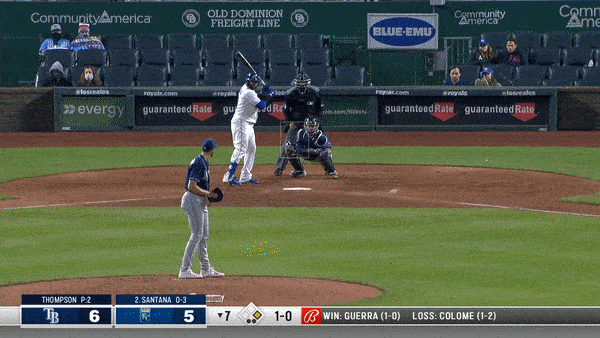
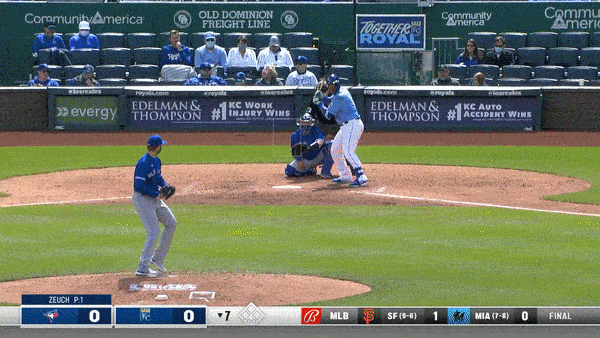


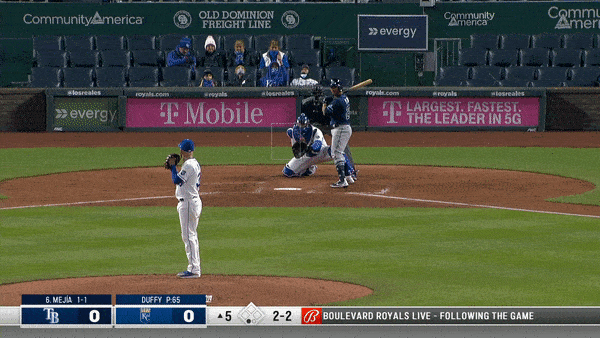
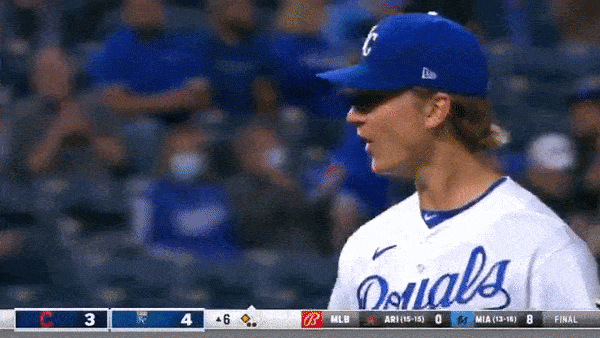
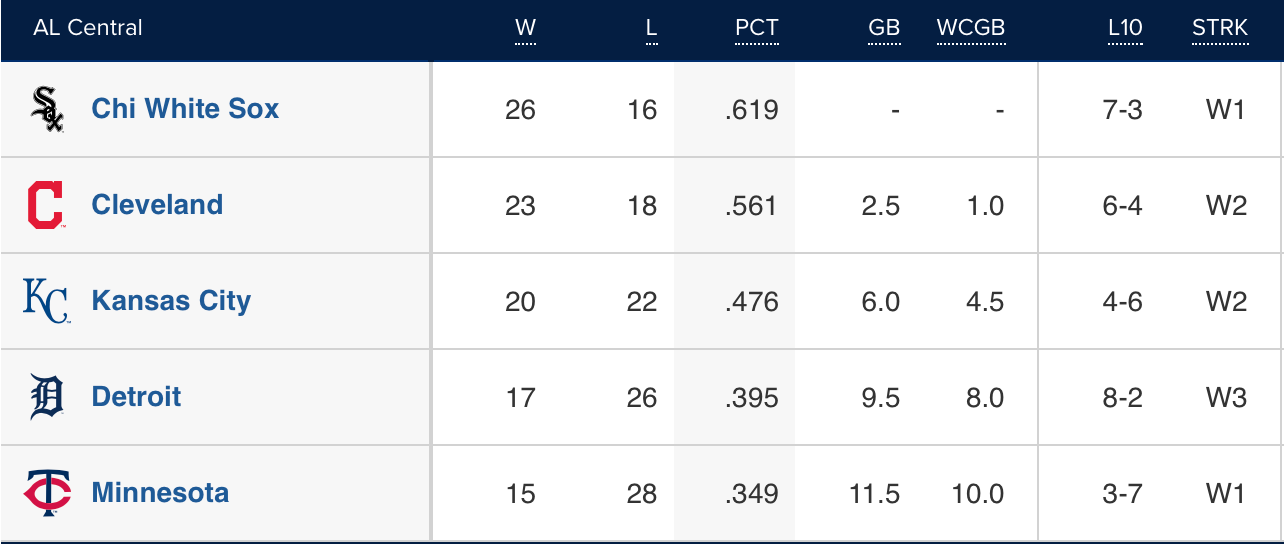
Great break down by the numbers. Is the next article about solutions? Playing GM is the best part of talking baseball.